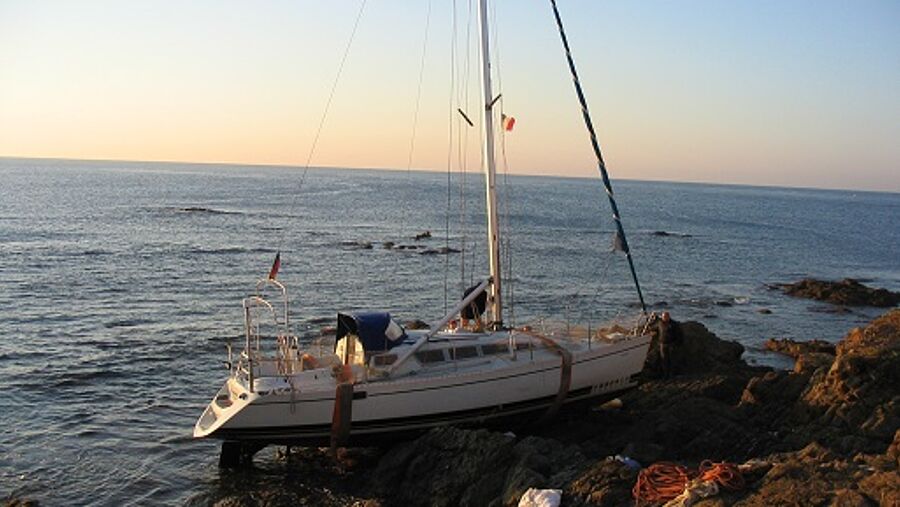
* Pantaenius UK Limited is authorised and regulated by the Financial Conduct Authority (Authorised No.308688)
To login to your account, please follow the link below. You will be redirected to the website of S.A.M. Pantaenius Monaco, Courtier d’Assurances Yachts, where your contracts have been concluded.
Continue to loginIt is no longer collisions, but grounding that has become the most common cause of damage on recreational boats. In most cases though, these incidents could be avoided says Holger Flindt of yacht insurance expert Pantaenius.

The Swedish archipelago is an absolute dream destination for many boaters, if only there weren’t so many rocks lurking under the surface that have already cost the keels of many yachts. For example, a 60-foot vessel, sailing at 6 knots over an underwater rock in the Stockholm archipelago, capsized within minutes. Nobody was injured, "but the contact with the rock resulted in huge financial loss," said Holger Flindt of Pantaenius.
Fortunately, grounding does not always have such dramatic consequences as in that example. Off the German and Danish coasts, the keel usually runs onto sand. If put into reverse swiftly, the yacht is easily free again.
What the insurance expert Holger Flindt finds interesting are the causes of a grounding: "In most cases the crew did not navigate properly or did not use the electronic nautical chart correctly," says the experienced sailor. "Especially in Sweden, correct navigation is everything. Even a deviation of 20 metres there can have consequences." And depending on the type of yacht concerned, this can lead to serious damage. In the worst case, not only the keel bulb, but the entire structure of the yacht is affected. "In our experience, mid-length keels with an older design are often better protected against grounding. In the past, the frame shape tended to be rounder. This means that there was more space to fix the keel bolts. Today the shape is flatter there is almost no bilge remaining. In addition, a parallel development is to make the keel deeper and narrower. This means that the leverage effect is greater," explains the insurance expert.
In order to prevent keel and structural damage caused by grounding, clear navigation is a must. This also includes conscientious trip planning. "One should not plan a trip exclusively with electronic sea charts, suggests Holger Flindt. "Because these show the entire travel area only in zoomed out view. To see the details, you have to zoom in. Due to the constant change of scale, mistakes quickly happen or something is overlooked." Navigating in the wrong zoom can be very treacherous - the most prominent example is the Volvo Ocean Race Team Vestas, which crashed into a reef off the Seychelles in 2014 without stopping. The obstacle was not visible on the electronic nautical chart. But sailors shouldn't blindly trust the classic paper chart either. No sport boat chart really lists all shallow hazards, such as standalone rocks.
Anyone who navigates in a sensitive area, such as the Wismar Bay, has to adjust their speed and keep a close watch. This is the only way to avoid unintentional contact with the ground.
Despite all caution, ground contact cannot be completely ruled out. Anyone who drives onto a sandbank normally has little to fear except for a little scratched anti-fouling paint. Nevertheless, Holger Flindt recommends looking under the boards upon any grounding: "If water penetrates, the position of the keel bolts has changed or hairline cracks appear, this points to structural damage. If nothing can be seen from the outside, crew can find any cracks in the keel seam or major damage to the keel bulb by diving down. After hitting the ground, the insurer should be informed immediately, and they will accompany you through all necessary steps. Also it is important to know: With a good insurer, the inspection costs after an instance of grounding are usually covered.”